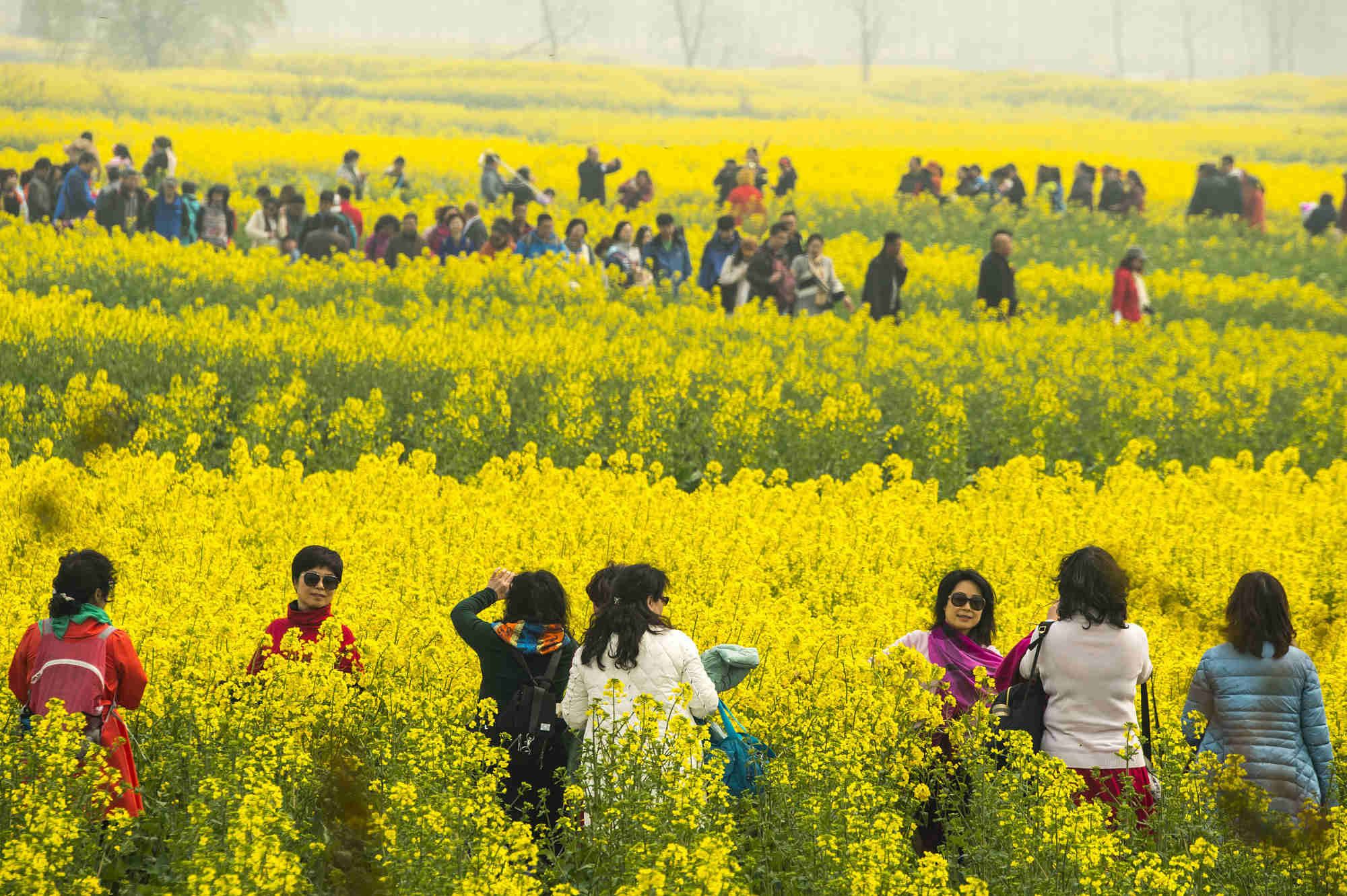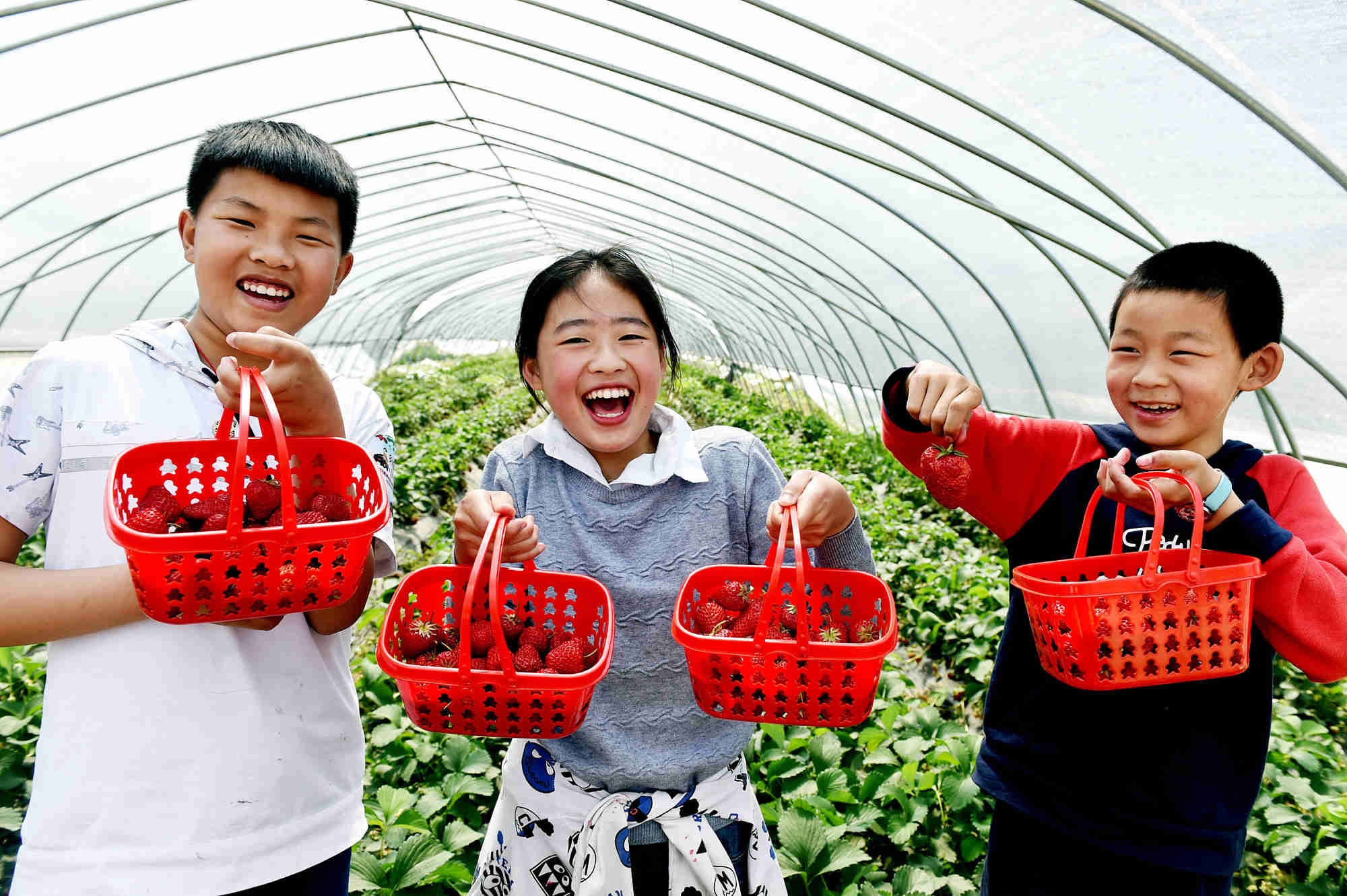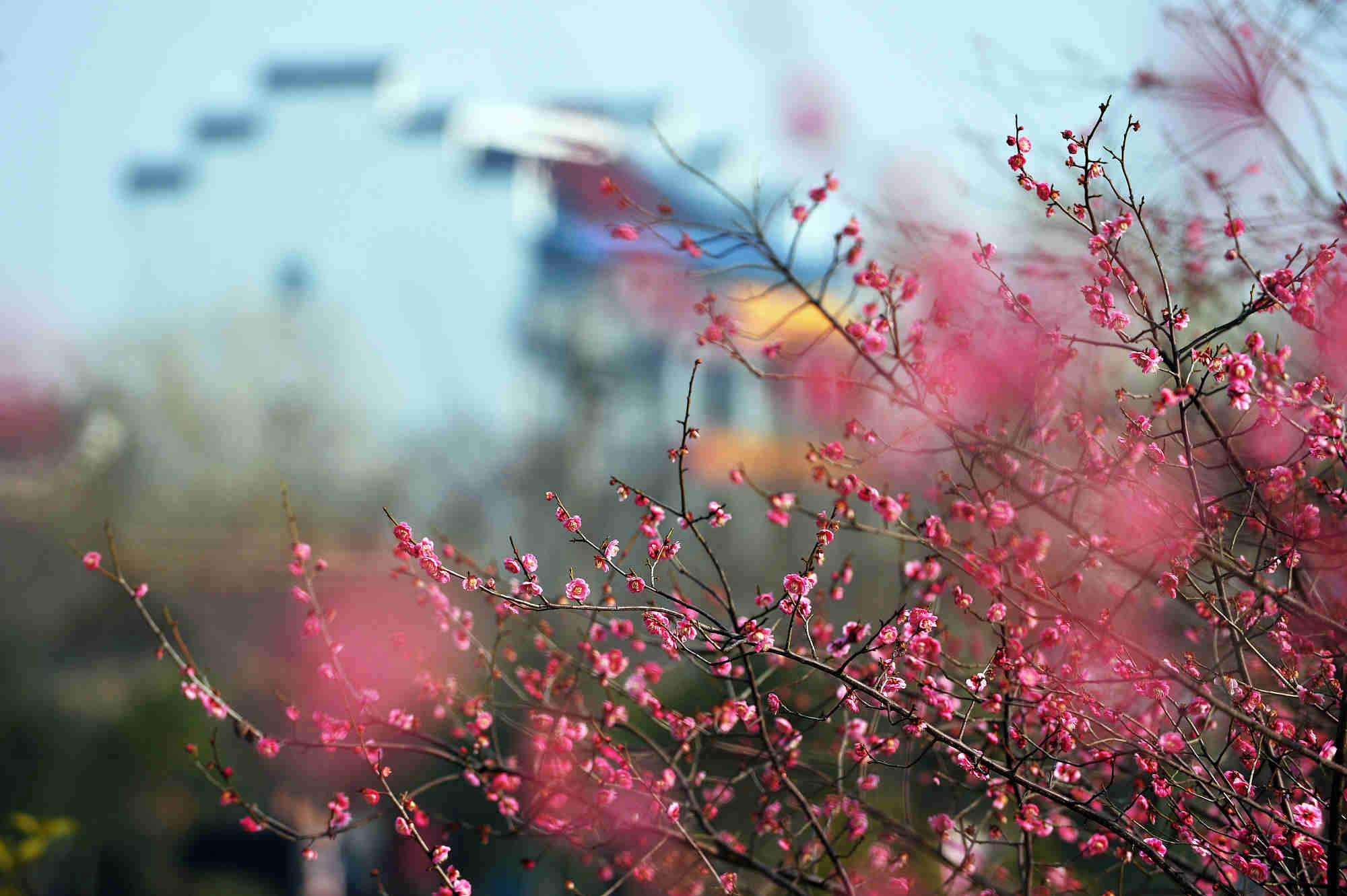Rural tourism is on the rise in China, as an increasing number of urban residents seek fresh air and nature-friendly lifestyles to break away from the pressures of their daily life.
According to a statistic of the Chinese Ministry of Agriculture, the leisure agriculture and rural tourism industry across the country received a total of 2.1 billion passenger trips in 2016, with total turnover exceeding 570 billion yuan (US$82 billion).
However, problems still exist for the newly emerging tourist trends.

Tourists admiring cauliflowers in Jiangsu Province, east China. /VCG Photo
He Ming, a company employee in Nanjing, in east China's Jiangsu Province, said he really enjoyed spending holidays in rural areas but high season in such areas could be very transient.
"When the harvest season ends, some attractions turn desolate or even close. I could hardly find a nice place to go," He Ming told the People's Daily. Many tourists have also complained that most rural tourist sites are so similar that they lose interest after only a few trips there.
According to Vice Minister of Agriculture Chen Xiaohua, over 300,000 business entities ran leisure agriculture and rural tourist sites in China in 2016, among which there were numerous picking gardens, but only few of them could be distinguished.
This homogeneity has severely affected and limited the healthy development of the industry, said Chen.

Children enjoying picking strawberries in a tour to rural areas in Hubei Province. /VCG Photo
Song Zengwen, senior planner of the China Academy of Urban Planning and Design, said the main reason is that rural tourism is still in its primary stage, when sites simply imitate one another, and high-quality resources and the specialties of traditional villages have not been fully explored.
The development of rural tourism could be combined with ecological, cultural and fashionable industries, Song suggested.
Inadequate infrastructural construction has also limited the development of rural tourism, according to Wu Bihu, professor at the College of Urban and Environmental Sciences of Peking University, pointing to sewage systems, garbage disposal and the Internet.
At the same time, construction should also avoid another extreme, which is the over-urbanization of rural tourist sites, said Wu.

A village in Anhui Province promote "Plum Blossom Festival" to boost tourism. /VCG Photo
Experts have suggested encouraging villagers to join in the development of rural tourism.
Rural tourism should benefit the farmers instead of pushing them aside, noted Vice Minister Chen Xiaohua.
Many local governments have been trying innovative ways to explore their local tourist resources. In Lujiacun village in east China's Zhejiang Province, village authorities have set up a joint venture company with a company in Hangzhou. The village accounted for 49 percent of the stock shares.

People play with farm tools while enjoying tourism in rural areas of Shanxi Province. /VCG Photo
According to Zhu Renbin, head of the village, there are now 18 family farms in the village linked by a four-kilometer rail. More than 300 local residents have found jobs within the village.
"All the 2,200 villagers could get a bonus from the company," said Zhu, "and many university graduates have now returned to the village to start their own companies as well."
China has been encouraging rural areas to develop tourism and leisure agriculture for years. China's "No. 1 Central Document," the country's first policy document each year, has included this sector for the past three years.









